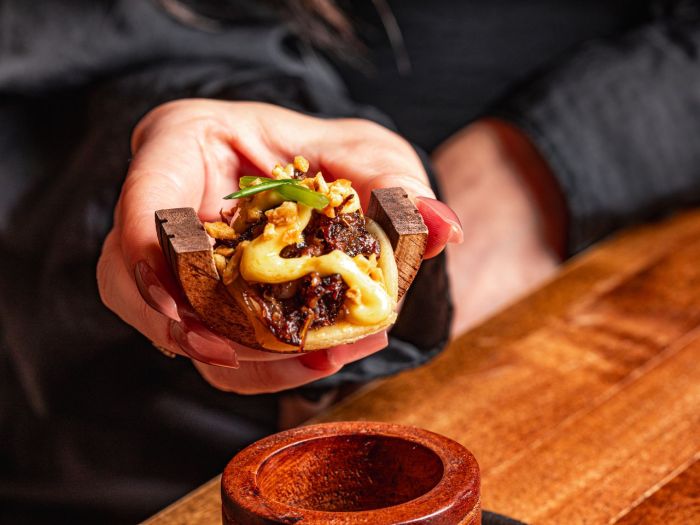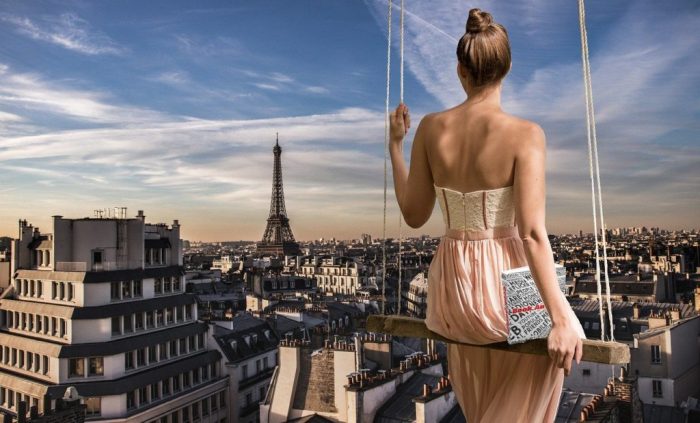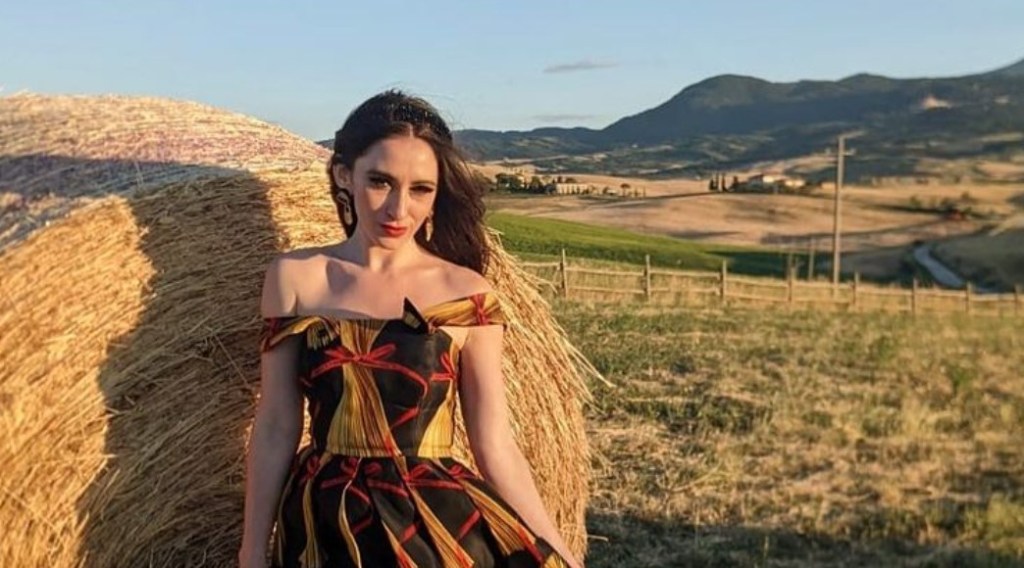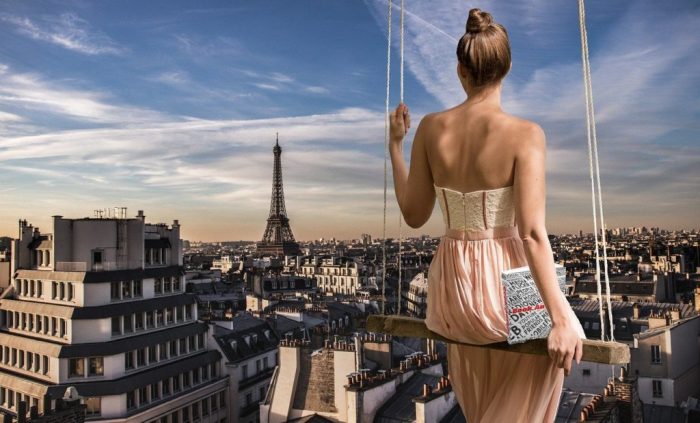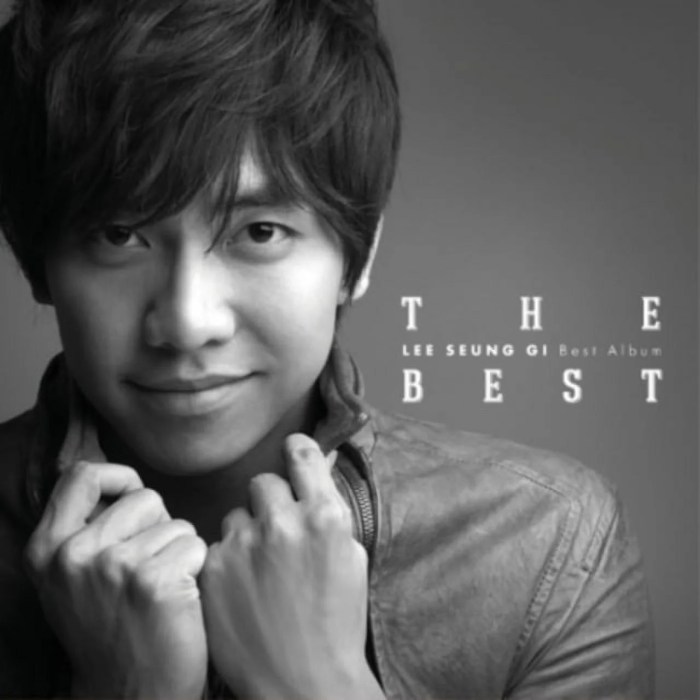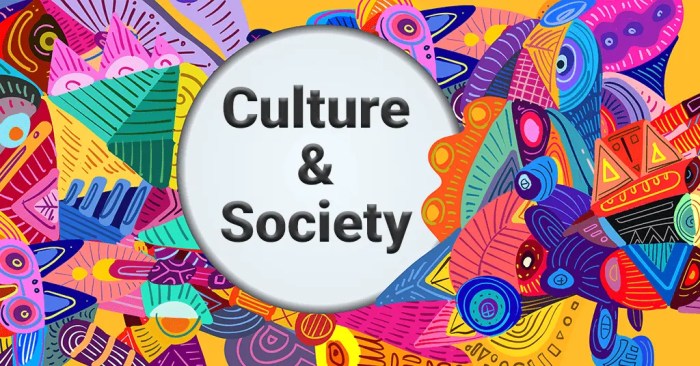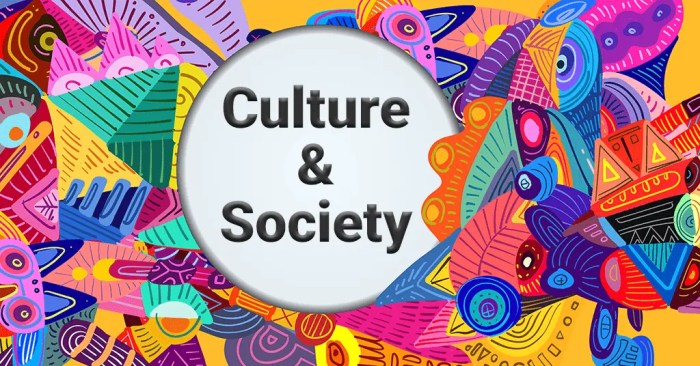Top free things to do in Toulouse: Discover the vibrant beauty and cultural treasures of this French city without spending a dime. From exploring stunning parks and gardens to delving into fascinating museums and captivating street art, Toulouse offers a wealth of free activities to enrich your visit. Get ready to experience the charm of Toulouse on a budget-friendly adventure!
This comprehensive guide provides detailed information on parks, gardens, museums, walking tours, markets, architecture, events, and practical tips for planning your free explorations. Discover the hidden gems and local favorites that make Toulouse a truly unforgettable destination, all while keeping your wallet happy.
Unveiling Toulouse’s Free Side
Toulouse, a vibrant city nestled in the heart of southwestern France, boasts a rich tapestry of history, culture, and culinary delights. Beyond the renowned museums and bustling markets, a world of free experiences awaits, offering a unique perspective into the city’s soul. Discovering these hidden gems allows visitors to connect with the local spirit and appreciate the beauty of Toulouse on a budget.
This exploration delves into the captivating free activities that await those seeking an authentic and affordable adventure.Free activities are essential for budget-conscious tourists, providing a chance to immerse themselves in a destination’s culture and atmosphere without breaking the bank. Experiencing a city’s character often involves exploring its parks, plazas, and public spaces. These spaces frequently offer free entertainment and a chance to interact with the local community.
They provide a unique perspective and foster a deeper understanding of the destination’s spirit.
Free Ways to Explore Toulouse’s History
Toulouse’s historical significance is palpable in its architecture and public spaces. Exploring these spaces allows for a rich, firsthand encounter with the city’s past. Free walking tours, available from various sources, provide a comprehensive introduction to Toulouse’s historical sites and landmarks. These tours often focus on specific eras or themes, allowing for a deep dive into the city’s heritage.
Immersive Experiences in Toulouse’s Parks and Gardens
Toulouse offers a wealth of stunning parks and gardens perfect for leisurely strolls and picnics. These green spaces provide a respite from the city’s bustling energy, allowing visitors to connect with nature and appreciate the beauty of their surroundings. The city’s parks frequently host free events, from concerts to open-air markets, offering a chance to experience the vibrant local culture.
Toulouse boasts some amazing free activities, like exploring the Canal du Midi or wandering through the vibrant city center. But if you’re looking for a truly unique free experience, consider venturing beyond the familiar and checking out the fascinating visit the northern point of the bermuda triangle. While not in Toulouse, this trip offers a different kind of free adventure that’s still worth the travel.
Ultimately, Toulouse offers many free activities to delight any traveler.
Enjoy the tranquility of the Jardin du Capitole, the extensive green spaces of the Parc des Expositions, and the tranquil beauty of the botanical gardens. Picnics and leisurely strolls within these settings create an enriching experience.
Discovering Toulouse’s Cultural Heart
Toulouse’s vibrant cultural scene offers opportunities for free engagement. The city’s many public squares, plazas, and piazzas often feature street performers, artists, and musicians. These spontaneous displays of talent create an atmosphere of creativity and community, enriching the visitor’s experience. The vibrant atmosphere of Toulouse’s streets and squares, often alive with artists and musicians, offers a unique and authentic cultural immersion.
Parks and Gardens
Toulouse, a city known for its vibrant culture and rich history, also boasts a stunning array of parks and gardens that offer respite and beauty. These green spaces are vital components of the city’s urban fabric, providing residents and visitors alike with opportunities for relaxation, recreation, and connection with nature. They serve as important community hubs, hosting events and activities that contribute to the city’s lively atmosphere.These parks and gardens play a significant role in shaping the urban landscape of Toulouse.
They are more than just places to stroll; they are spaces where people connect, where children play, and where the city’s history and heritage are often subtly interwoven into the very fabric of the green spaces. Their design and maintenance are carefully considered, reflecting the city’s commitment to fostering a harmonious relationship between urban development and natural beauty.
Prominent Parks and Gardens
Toulouse features several noteworthy parks and gardens, each with its own unique character and history. They are carefully curated spaces that showcase a blend of traditional and contemporary design elements. From tranquil settings for reflection to lively areas for communal activities, these green spaces are vital components of the city’s urban ecosystem.
| Name | Brief Description | Notable Features | Directions |
|---|---|---|---|
| Parc des Expositions | A large park complex, primarily used for exhibitions and events. | Vast open spaces, often hosting festivals and fairs; numerous pathways and recreational areas. | Located near the city’s exhibition center. |
| Parc de la Daurade | A beautiful park with a lake and a historic fountain. | Features a charming lake perfect for boating, a playground for children, and a stunning fountain. It’s a popular spot for picnics and leisurely strolls. | Located in the heart of the city, near the Capitole. |
| Jardin du Ramier | A smaller, more intimate park with a tranquil atmosphere. | Features a variety of trees, flowers, and shrubs; perfect for a peaceful walk or a quiet moment of reflection. Often hosts small cultural events. | Located in the city’s south-eastern area. |
| Parc de la Pech | A park featuring a large playground, a small lake, and open areas for activities. | Well-equipped playground, an ideal location for families with young children. The park’s open areas offer space for sports and games. | Situated in the western part of Toulouse. |
Historical Significance
Many of these parks and gardens developed from earlier agricultural lands or private estates. The conversion of these spaces into public parks and gardens reflected evolving societal values, demonstrating a commitment to creating green spaces for the enjoyment of the wider community. For instance, the Parc de la Daurade’s lake area was once a part of a larger water system.
The transformation of this space into a public park showcases a shift in how the city integrated natural elements into its urban design.
Unique Features and Activities
These parks offer a variety of activities and attractions that cater to different interests. These spaces are carefully designed to encourage a diverse range of activities, from family-friendly picnics to organized sporting events.
- Walking trails wind through the parks, offering opportunities for leisurely strolls and scenic views.
- Playgrounds provide safe and stimulating environments for children to play and socialize.
- Picnic areas provide spaces for relaxation and enjoying meals in the fresh air.
- Cultural events and festivals are frequently held in the parks, creating lively atmospheres and showcasing local talents.
- Some parks feature historic monuments or sculptures, enriching the experience with cultural context.
Museums and Cultural Venues
Toulouse boasts a rich tapestry of history and culture, woven into its very architecture. Beyond the vibrant city life, numerous museums and cultural venues offer a chance to delve deeper into this heritage. Exploring these spaces, often free of charge, allows visitors to appreciate the city’s artistic and intellectual spirit without breaking the bank.Free museums and cultural venues provide unique opportunities to engage with diverse collections and exhibitions.
These spaces offer a chance to learn about Toulouse’s past, present, and future, fostering a deeper understanding of the city’s identity. By showcasing local talent and international contributions, these venues encourage cultural exchange and appreciation.
Free Museums and Venues
Many museums in Toulouse offer free admission on certain days or during specific hours. This allows residents and tourists to explore fascinating collections without incurring any costs. Exploring these spaces, often free of charge, allows visitors to appreciate the city’s artistic and intellectual spirit without breaking the bank.
The Toulouse City Museum
The Toulouse City Museum (Musée de la Ville de Toulouse) provides a comprehensive overview of the city’s history, from its Roman origins to the present day. The museum’s collections include archaeological artifacts, historical documents, and contemporary works. The museum’s exhibitions highlight the city’s evolution and the role of Toulouse in shaping the surrounding region.
The Musée des Augustins
The Musée des Augustins, housed in a former Augustinian convent, is renowned for its impressive collection of paintings and sculptures, spanning various periods. It includes works by prominent artists, from the medieval era to the 19th century. The museum’s historical setting enhances the appreciation of the art housed within.
The Cité de l’Espace
While admission to the Cité de l’Espace (Space City) usually incurs a fee, there are often free events, workshops, and temporary exhibitions. The Cité de l’Espace is dedicated to space exploration and technology, and these free events often provide a fascinating glimpse into the wonders of the cosmos.
Table of Free Museums and Cultural Venues
| Museum Name | Description | Opening Hours | Address |
|---|---|---|---|
| Musée de la Ville de Toulouse | Comprehensive overview of Toulouse’s history. | Check website for specific days and hours. | Address will be provided on the website. |
| Musée des Augustins | Impressive collection of paintings and sculptures. | Check website for specific days and hours. | Address will be provided on the website. |
| Cité de l’Espace (Free events/exhibitions) | Dedicated to space exploration and technology. | Check website for specific events and hours. | Address will be provided on the website. |
Walking Tours and Street Art: Top Free Things To Do In Toulouse
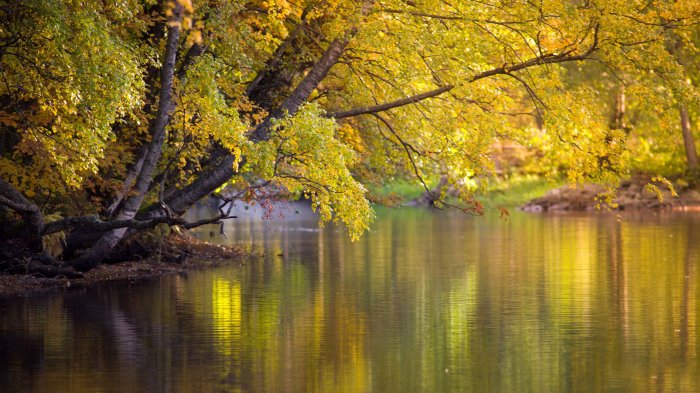
Toulouse, a city brimming with history and vibrant culture, offers a unique way to experience its charm through free walking tours. These tours, often led by passionate local guides, provide a captivating glimpse into the city’s past and present. Beyond the traditional historical landmarks, these tours frequently delve into lesser-known stories and anecdotes, painting a more nuanced portrait of the city’s soul.
Complementing these historical explorations is Toulouse’s burgeoning street art scene, a testament to the city’s artistic spirit and contemporary energy.Exploring Toulouse through walking tours, combined with the discovery of its street art, provides a dynamic and engaging experience that goes beyond the typical tourist itinerary. The tours unveil hidden gems and unique perspectives, while the street art offers a contemporary artistic expression interwoven into the city’s fabric.
Free Walking Tours in Toulouse
Toulouse boasts several free walking tour operators offering various thematic itineraries. These tours often focus on different neighborhoods, historical periods, or specific interests, such as food or architecture. Tours usually last a few hours and cover a significant portion of the city center. Participants are encouraged to contribute a small tip at the end of the tour to compensate the guides for their time and effort.
Highlights of Toulouse Walking Tours
These tours frequently cover key historical sites, like the Capitole, the Saint-Sernin Basilica, and the Canal du Midi. However, the tours often stray from the usual tourist paths to unveil less-known corners and stories. Guides provide insight into the city’s evolution, highlighting pivotal moments in its history and connecting them to the present. For instance, tours might relate the city’s industrial past to its contemporary artistic scene, or discuss the influence of various historical figures on the city’s development.
Toulouse’s Street Art Scene
Toulouse’s street art scene is characterized by a diverse range of styles, from murals depicting historical figures to abstract expressions reflecting contemporary artistic trends. The city’s urban landscape serves as a canvas for talented artists, creating a vibrant and dynamic atmosphere. This artistic expression enriches the city’s visual appeal and fosters a sense of community engagement.
Popular Street Art Locations
The city center, with its charming squares and pedestrianized streets, is a prime location for discovering street art. Specific neighborhoods like the Saint-Cyprien district often feature vibrant murals and installations. The areas around the Canal du Midi, given its historical significance and proximity to the city center, are also frequently adorned with street art.
Suggested Walking Routes
A suggested walking route could begin at the Capitole, tracing the historical heart of the city. From there, the route could traverse the Saint-Sernin neighborhood, allowing exploration of the iconic Basilica and nearby street art. This route could be extended to include the Canal du Midi, further enriching the experience with its historical context and street art. A second route could focus on the more contemporary areas of the city, such as the Saint-Cyprien district, showcasing the diversity of styles and themes found in the modern street art scene.
In both routes, careful attention to the historical and artistic details will enhance the overall experience.
Markets and Food Experiences
Toulouse’s vibrant food scene is a feast for the senses, and experiencing it doesn’t always require a hefty budget. The city’s markets offer a unique opportunity to immerse yourself in local culture, sample delicious treats, and discover the heart of Toulouse’s culinary traditions. From bustling stalls to open-air food events, there’s a plethora of free activities waiting to be explored.The markets are more than just places to buy groceries; they’re social hubs, vibrant with the sounds of vendors hawking their wares, the chatter of locals, and the enticing aromas of freshly prepared foods.
The atmosphere is electric, inviting you to linger, sample, and engage with the community. These markets provide a tangible link to the local food culture, showcasing the diverse ingredients and culinary heritage of the region.
Toulouse’s Vibrant Markets
Toulouse boasts a range of markets, each with its own distinct character and specialties. These markets are an excellent way to experience the city’s unique identity and savor the local flavors. Whether you’re a seasoned foodie or a curious newcomer, there’s something for everyone.
Local Food Culture and Traditions
Toulouse’s food culture is deeply rooted in its history and traditions. The city’s culinary scene is characterized by the use of fresh, seasonal ingredients, often sourced directly from the surrounding countryside. A variety of local delicacies are showcased, from traditional pastries to hearty stews.
- Local vendors often prepare dishes on-site, offering a glimpse into traditional cooking methods. This direct interaction with the preparation process provides a unique opportunity to appreciate the dedication and artistry of the local cooks. You’ll find that many markets offer sample portions of their dishes at no cost, making it easy to try something new without breaking the bank.
- Public food events, frequently held in conjunction with markets, further enhance the culinary experience. These events are a chance to witness live cooking demonstrations, taste local specialties, and learn about the region’s culinary heritage. These events are usually free to attend, adding another layer of enjoyment to the market experience.
Enjoying the Market Atmosphere
To fully appreciate the atmosphere of these markets, consider these tips:
- Arrive early to avoid the crowds and grab a prime spot to watch the activity.
- Engage with the vendors. They are often happy to share information about their products and the local traditions behind them.
- Take your time. Explore the stalls, sample different treats, and soak in the sights and sounds of the market.
- Don’t be afraid to ask questions. Learning about the origins of the food and the history of the market can enrich your experience.
Different Markets and their Specialties
| Market Name | Specialties | Location |
|---|---|---|
| Marché des Carmes | Fresh produce, local cheeses, regional specialties | Carmes district |
| Marché de la Place Wilson | Seafood, meats, fresh flowers | Place Wilson |
| Marché Paul Riquet | Artisan crafts, clothing, food stalls | Paul Riquet district |
Architecture and Historical Sites

Toulouse, a city steeped in history, boasts a wealth of architectural and historical treasures. Many of these sites are free to explore, offering a fascinating glimpse into the city’s past and its unique character. From Roman ruins to grand historical buildings, a walk through Toulouse’s historical heart is a journey through time. Discovering these sites allows visitors to connect with the city’s identity on a deeper level.Exploring Toulouse’s historical architecture and sites provides a unique insight into the city’s development and its enduring character.
These sites, often free of charge, allow for a deeper understanding of the past and its influence on the present-day cityscape. Furthermore, appreciating these sites often involves finding the best vantage points to capture their grandeur and beauty.
Notable Architectural Styles
Toulouse displays a diverse array of architectural styles, reflecting its long and eventful history. The city’s historical evolution is clearly visible in its buildings, ranging from Romanesque structures to more modern buildings. Understanding the different periods and their influences on the current architectural landscape is key to appreciating the city’s rich past.
Historical Sites of Significance
Toulouse’s historical sites are significant for various reasons. They tell stories of past civilizations, highlight key events, and showcase the city’s evolution. Many of these sites offer free access, allowing everyone to experience the history and culture.
Best Viewpoints and Vantage Points
To fully appreciate the architectural and historical sites, finding the best viewpoints is crucial. These viewpoints offer panoramic perspectives, highlighting the interconnectedness of the buildings and their impact on the urban landscape. Sometimes, a slightly elevated position, or a strategic placement within the site itself, provides a remarkable view of the city’s historical architecture. The Capitole de Toulouse, for instance, offers a prime viewpoint from its surrounding courtyards and terraces, allowing visitors to admire the city’s skyline.
Historical Sites Table, Top free things to do in toulouse
| Historical Site | Description | Location |
|---|---|---|
| Capitole de Toulouse | The historical seat of the city’s government, featuring a blend of architectural styles and showcasing the city’s political history. | Place du Capitole |
| Saint-Sernin Basilica | A significant Romanesque church, showcasing a remarkable architectural design and history of religious devotion in Toulouse. | Rue de la Loge |
| Toulouse City Walls | Remnants of the city’s medieval fortifications, providing insights into the city’s defensive strategies and offering breathtaking views of the city. | Various sections throughout the city |
| Roman Aqueduct | An impressive Roman aqueduct, demonstrating the advanced engineering of the time and the integration of Roman infrastructure into Toulouse’s early history. | Various locations near the city center |
Events and Festivals
Toulouse, a vibrant city, comes alive with a rich tapestry of free events and festivals throughout the year. These celebrations showcase the city’s diverse culture, from its historical roots to its modern spirit. From lively music performances to captivating artistic displays, there’s something for everyone to enjoy.Finding information about upcoming events and festivals in Toulouse is relatively straightforward.
Online resources, city websites, and local community boards are excellent starting points. Many events also post details on social media platforms, making it easy to stay updated.
Toulouse’s Free Festival Calendar
A variety of free events and festivals enliven Toulouse’s cultural landscape. These gatherings range from traditional celebrations to modern artistic expressions. They are an integral part of the city’s unique identity.
Toulouse offers tons of free activities, from strolling through the vibrant Canal du Midi to exploring the city’s charming squares. But if you’re looking for something truly unique, consider checking out the arc visitor centre svalbard – an amazing space dedicated to the region’s incredible Arctic landscapes. Back in Toulouse, you can still enjoy a free day out with the city’s various parks and museums often offering free entry days.
- Toulouse Summer Festival: This multi-day festival, typically held in July and August, features a mix of musical performances, theater shows, and family-friendly activities. It often takes place in various parks and public squares throughout the city. The diverse musical lineup showcases both local and international talent.
- Toulouse Christmas Market: A festive market emerges in the city center during the holiday season. The market typically features a wide range of crafts, local produce, and festive treats. This is a beloved tradition for residents and tourists alike.
- Toulouse Film Festival: While the primary festival may have fees for some screenings, there are often free film screenings and related activities in parks or community centers. This event highlights cinematic talent, both established and emerging.
- Local neighborhood celebrations: Many neighborhoods in Toulouse host their own unique celebrations and festivals. These events often involve food stalls, music performances, and local crafts. These neighborhood-specific events provide a glimpse into the distinct character of each area.
How to Find Upcoming Events
Numerous online platforms and resources provide up-to-date information about upcoming events and festivals. City websites, cultural centers, and local news sources often publish detailed schedules. Furthermore, social media channels are commonly used to announce new events.
| Event | Dates | Location | Description |
|---|---|---|---|
| Toulouse Summer Festival | Typically July-August | Various parks and public squares | A mix of music, theater, and family activities |
| Toulouse Christmas Market | Holiday season | City center | Crafts, local produce, and festive treats |
| Toulouse Film Festival (Free Screenings) | Variable | Parks/Community Centers | Free film screenings and related activities |
| Local Neighborhood Celebrations | Throughout the year | Specific neighborhoods | Neighborhood-specific events with food, music, and crafts |
Tips for Planning Free Activities
Unveiling Toulouse’s free side involves more than just knowing where to go; it’s about maximizing your experience and discovering hidden gems. This section provides practical tips for planning your free adventures in Toulouse, from navigating the city to finding local favorites and staying informed about spontaneous opportunities. Mastering these strategies will ensure you make the most of your time and truly appreciate the city’s vibrant offerings.Planning free activities in Toulouse, much like any city, requires a blend of strategic thinking and openness to serendipity.
Knowing how to navigate the city efficiently and understanding how to find local favorites will lead to a richer experience. This section details methods for making the most of your time and uncovering the unique character of Toulouse.
Utilizing Public Transportation
Toulouse boasts an extensive and efficient public transportation system, including metro, buses, and trams. Understanding the routes and schedules is crucial for exploring the city’s many free attractions without relying on taxis or ride-sharing services, which can quickly drain your budget. Using the public transport system not only reduces costs but also allows you to immerse yourself in the city’s atmosphere and observe its everyday life.
Toulouse boasts some fantastic free activities, like wandering through the Canal du Midi, or exploring the impressive architecture. For a completely different vibe, consider a Trancoso Brazil beach vacation, a truly unforgettable experience! The vibrant culture and stunning beaches are sure to take your breath away, as seen in this excellent guide to trancoso brazil beach vacation.
However, back to Toulouse, you can also discover hidden gems in the city’s many parks and squares for free.
Maximizing Your Experience
Embarking on a walking tour is an excellent way to immerse yourself in the local culture and discover hidden gems. Many free walking tours are available, and they offer a unique perspective on the city’s history, architecture, and vibrant neighborhoods. Consider joining a walking tour or embarking on your own self-guided exploration, using a map to navigate the city.
This will provide a more intimate understanding of the city’s layout.
Finding Hidden Gems and Local Favorites
Local shops and markets offer a wealth of insights into Toulouse’s culture and daily life. Visiting local markets, such as the Marché des Carmes or the Marché Victor Hugo, is a fantastic way to discover unique local products and experience the city’s vibrant atmosphere. Engage with local vendors to gain firsthand knowledge of local preferences and discover hidden gems often overlooked by tourists.
Staying Informed about Free Events and Opportunities
Toulouse offers a dynamic calendar of free events, from concerts and festivals to exhibitions and workshops. Staying informed is key to maximizing your free time. Utilizing online resources, such as the city’s official website, local community forums, and social media groups, is vital for discovering upcoming free events. This proactive approach ensures you don’t miss out on spontaneous and engaging opportunities.
Resources for Planning Free Activities
Staying organized and informed about free activities is essential for a successful trip. The following table provides useful websites and apps for planning free activities in Toulouse.
| Website/App | Description |
|---|---|
| Toulouse City Official Website | Provides information on city events, attractions, and public transportation. |
| Local Community Forums (e.g., Meetup) | Discover local events, meet people, and find community-organized activities. |
| Social Media Groups (e.g., Facebook) | Stay updated on local events and initiatives through dedicated groups. |
| Google Maps | Provides detailed maps, real-time information, and recommendations for local activities. |
| Citymapper | Offers comprehensive public transportation information, including schedules and routes. |
Conclusion
Unveiling Toulouse’s free side offers a compelling perspective on experiencing this vibrant city. From its picturesque parks and bustling markets to its rich history and artistic heart, Toulouse boasts a wealth of opportunities for exploration without breaking the bank. This article has highlighted the diverse range of free activities available, providing a roadmap for maximizing your time and discovering the city’s unique charm.
The significance of free activities extends beyond mere financial considerations. They foster a deeper connection with the local culture, allowing visitors to immerse themselves in the city’s spirit and rhythm. Free experiences provide a more authentic understanding of a destination, enabling a more personal and meaningful travel experience. This is particularly true in Toulouse, where the free offerings are interwoven with the city’s very essence.
Summary of Key Points
This exploration of free activities in Toulouse highlights the city’s accessibility and the diverse opportunities for enjoyment. The article covers parks and gardens, museums and cultural venues, walking tours and street art, markets and food experiences, architecture and historical sites, and local events and festivals. Each section underscores the abundance of free experiences that cater to various interests and preferences, making Toulouse an attractive destination for budget-conscious travelers and locals alike.
Final Thoughts on Free Exploration
Free activities are not just a way to save money; they are a pathway to experiencing the true heart of a city. In Toulouse, these experiences offer a unique perspective, fostering a deeper appreciation for the city’s history, art, and culture. They allow visitors to connect with the local community on a more intimate level, forging lasting memories and creating a richer travel experience.
Encouraging Exploration
Toulouse awaits your discovery. Embark on a journey through its vibrant parks, explore its rich history, and immerse yourself in the city’s artistic spirit. From the iconic Canal du Midi to the captivating street art, every corner of Toulouse offers a free adventure. Embrace the spirit of exploration, and let Toulouse captivate you with its unique charm.
Plan your free explorations, and discover the magic of Toulouse.
Final Wrap-Up
In conclusion, Toulouse’s free offerings provide a diverse range of experiences, allowing visitors to connect with the city’s rich history, vibrant culture, and stunning landscapes without breaking the bank. From leisurely strolls through picturesque parks to discovering captivating street art, this guide highlights the many ways to appreciate Toulouse’s allure at no cost. Embrace the spirit of free exploration and create lasting memories in this captivating French city!








